"Exploring the Universe" Infinite Universe PPT courseware Simple campus recruitment activity planning plan summary enterprise and institution recruitment publicity lecture PPT template is a general PPT template for business post competition provided by the manuscript PPT, simple campus recruitment activity planning plan summary enterprise and institution recruitment promotion Lecture PPT template, you can edit and modify the text and pictures in the source file by downloading the source file. If you want more exquisite business PPT templates, you can come to grid resource. Doug resource PPT, massive PPT template slide material download, we only make high-quality PPT templates!
| 文件名 如何下载使用 | 下载次数 | Download Points | 下载地址 |
|---|---|---|---|
| "Exploring the Universe"... | 10725次 | 0.00 | Free Download |
Tips: If you open the template and feel that it is not suitable for all your needs, you can search for related content "Exploring the Universe" Infinite Universe PPT courseware is enough.
How to use the Windows system template
Directly decompress the file and use it with office or wps
How to use the Mac system template
Directly decompress the file and use it Office or wps can be used
Related reading
For more detailed PPT-related tutorials and font tutorials, you can view: Click to see
How to create a high-quality technological sense PPT? 4 ways to share the bottom of the box
Notice
Do not download in WeChat, Zhihu, QQ, built-in browsers, please use mobile browsers to download! If you are a mobile phone user, please download it on your computer!
1. The manuscript PPT is only for study and reference, please delete it 24 hours after downloading.
2. If the resource involves your legitimate rights and interests, delete it immediately.
3. Contact information: service@daogebangong.com
"Exploring the Universe" Infinite Universe PPT courseware, due to usage restrictions, it is only for personal study and reference use. For commercial use, please go to the relevant official website for authorization.
(Personal non-commercial use refers to the use of this font to complete the display of personal works, including but not limited to the design of personal papers, resumes, etc.)

Related reading
For more detailed PPT-related tutorials and font tutorials, you can view:Please click to see



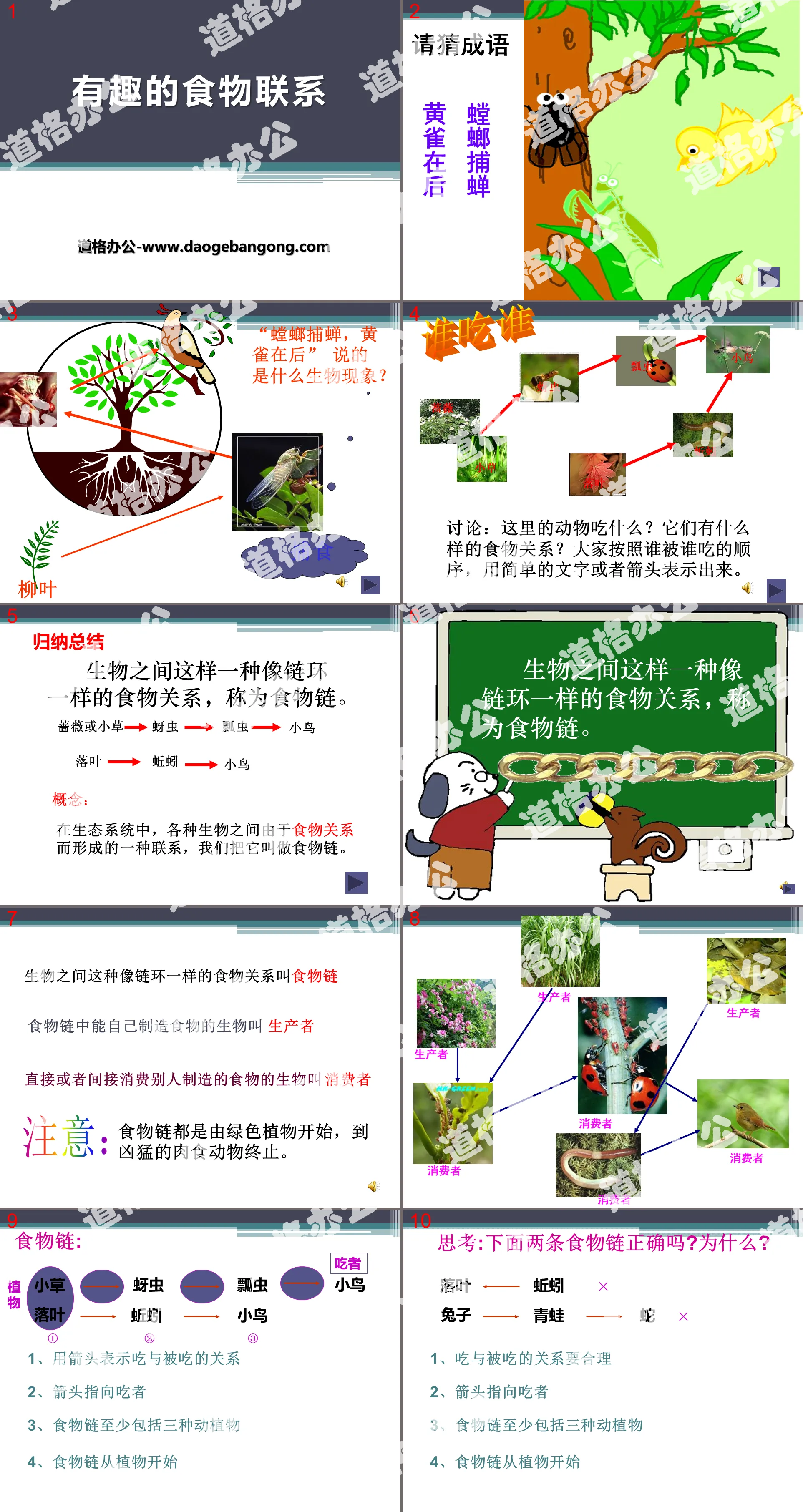
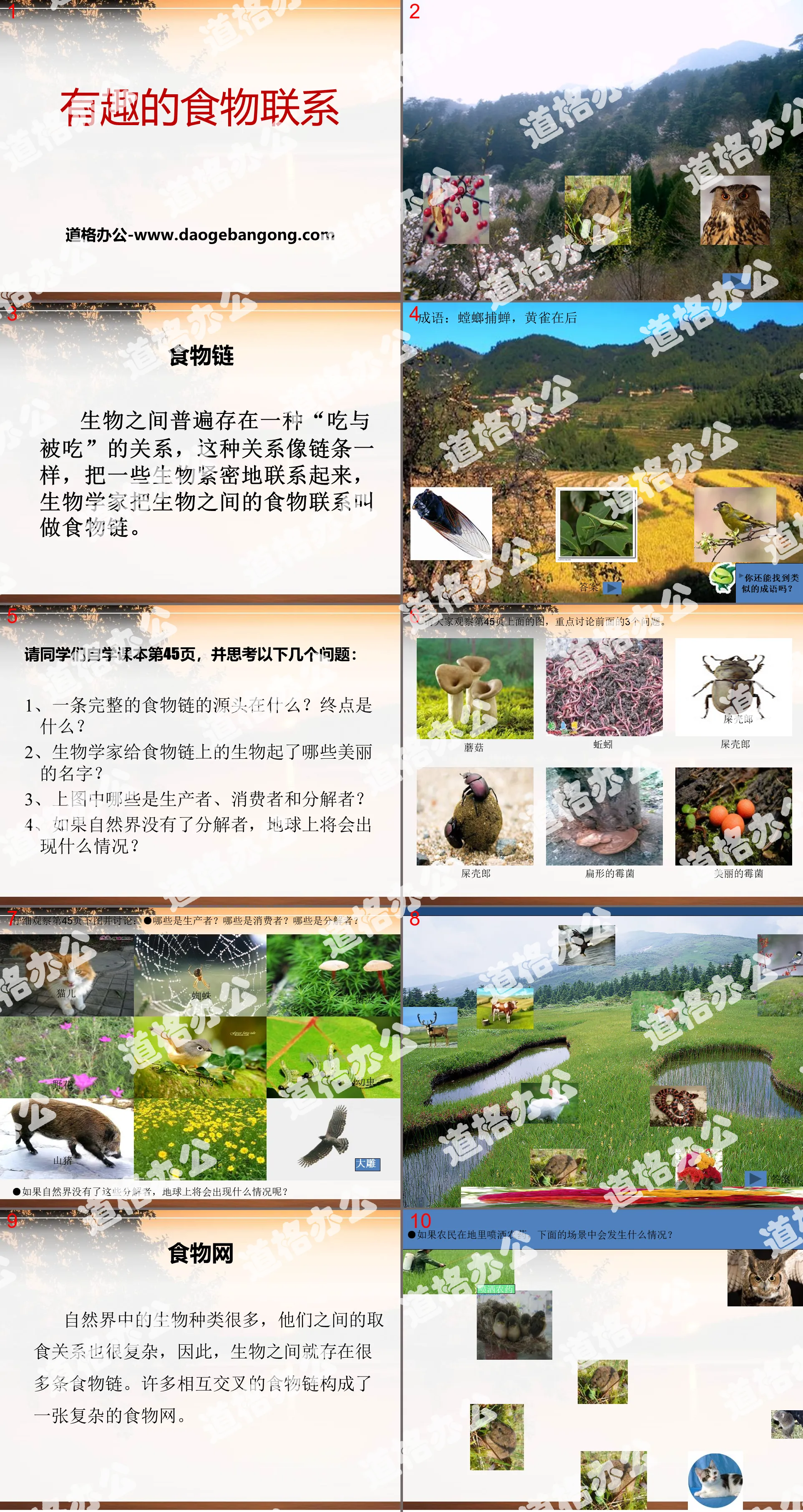
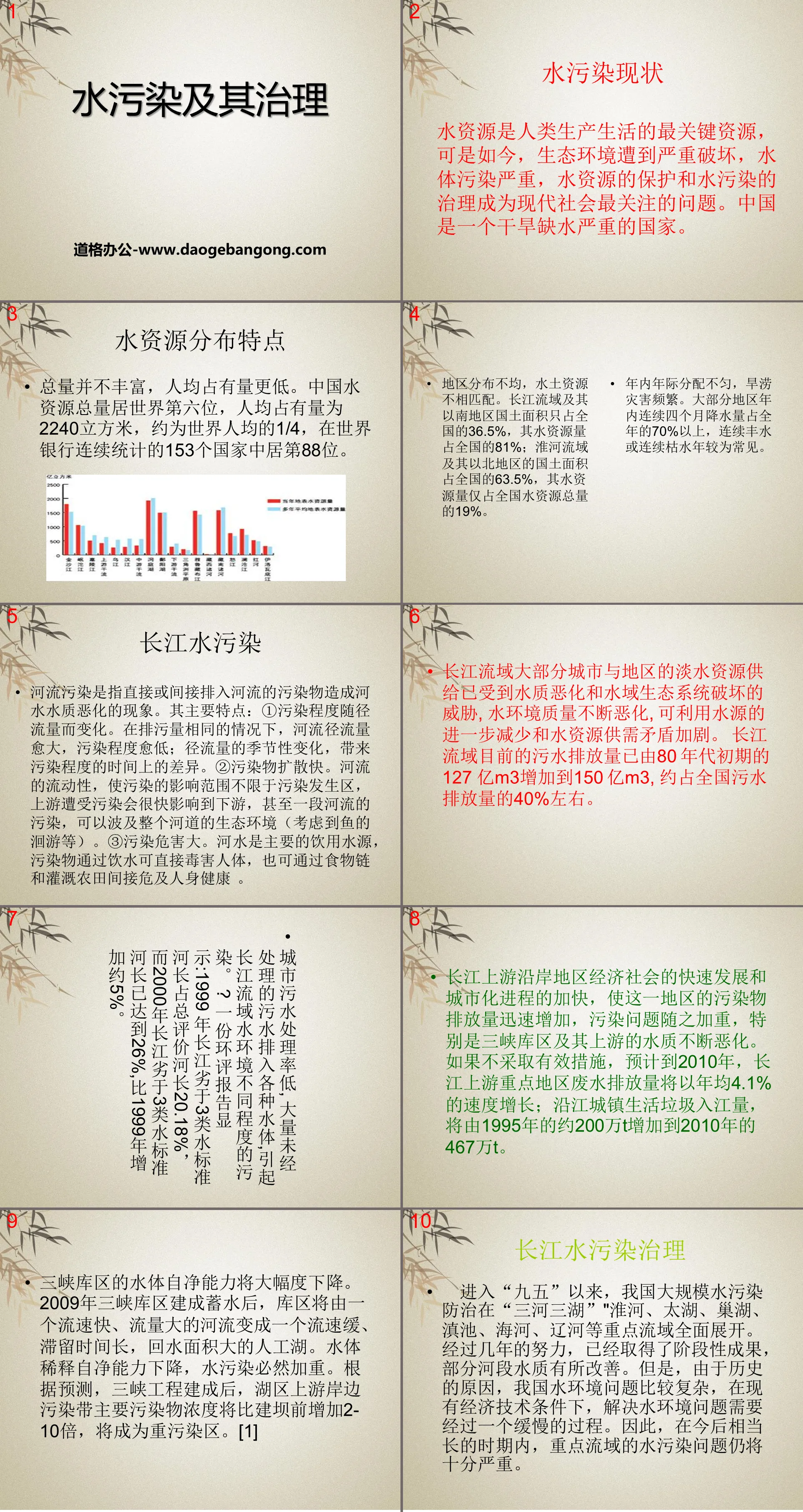
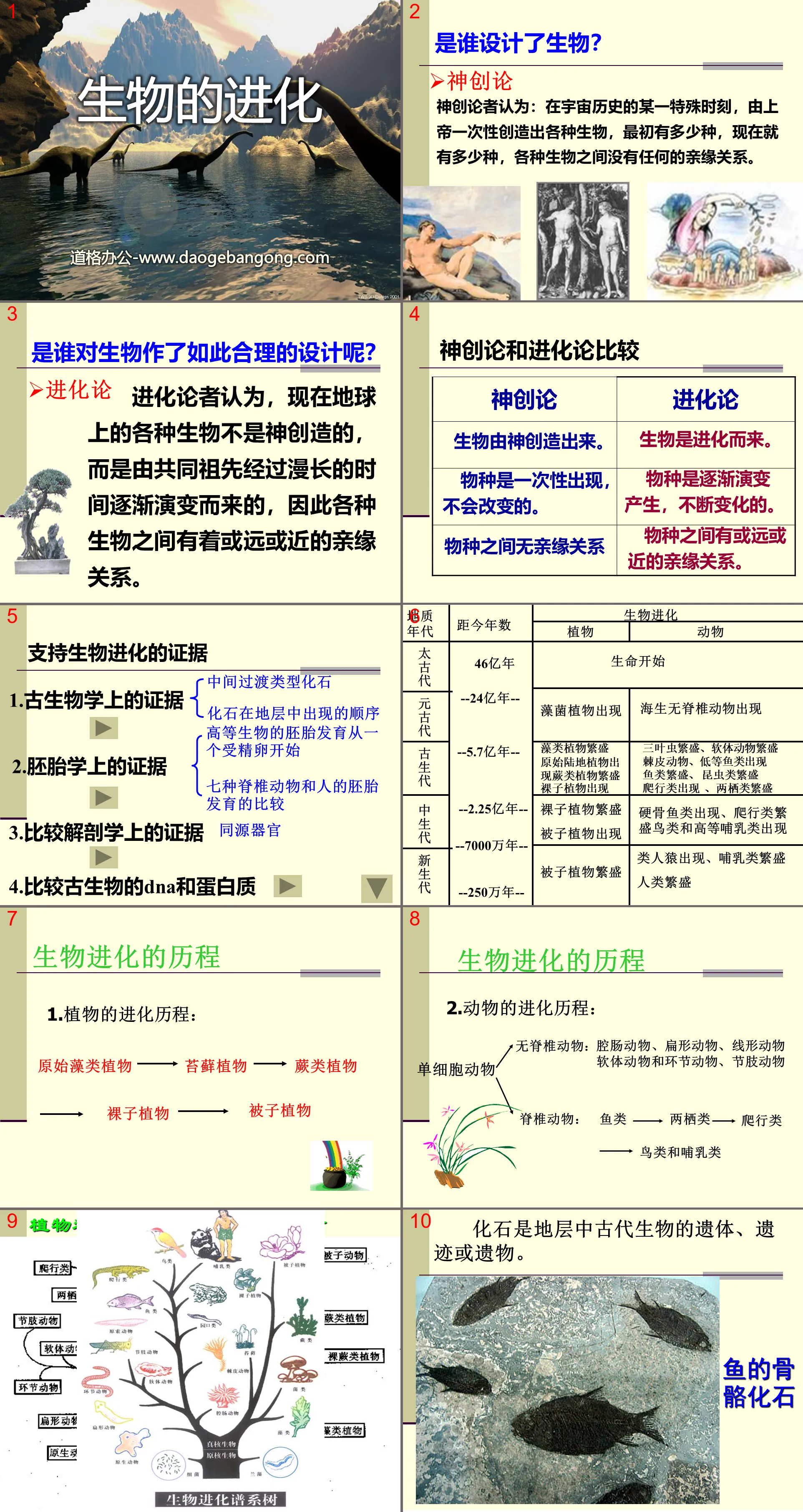

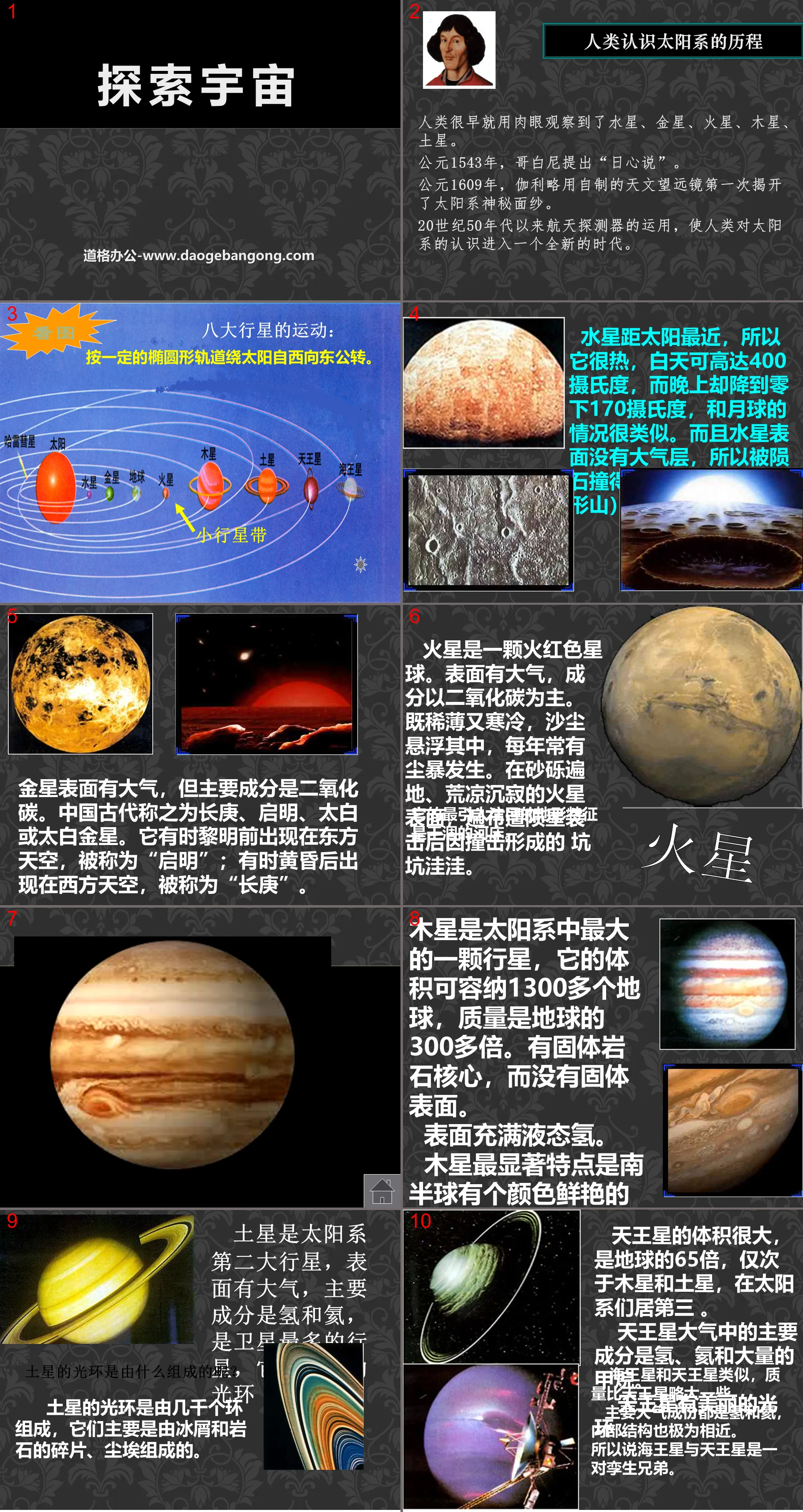

Authoritative PPT Summary
"Exploring the Universe" Infinite Universe PPT courseware
The journey of mankind’s understanding of the solar system
Human beings have long observed Mercury, Venus, Mars, Jupiter, and Saturn with the naked eye.
In 1543 AD, Copernicus proposed the "heliocentric theory."
In 1609 AD, Galileo Galilei used a homemade astronomical telescope to reveal the mystery of the solar system for the first time.
The use of space probes since the 1950s has brought mankind's understanding of the solar system into a new era.
Mercury is the closest to the sun, so it is very hot. It can be as high as 400 degrees Celsius during the day, but drops to minus 170 degrees Celsius at night, which is very similar to the situation on the moon. Moreover, Mercury has no atmosphere on its surface, so it is cratered (with craters) by meteorites.
Venus has an atmosphere on its surface, but its main component is carbon dioxide. In ancient China, it was called Changgeng, Qiming, Taibai or Taibai Venus. Sometimes it appears in the eastern sky before dawn and is called "Qiming"; sometimes it appears in the western sky after dusk and is called "Chang Geng".
Mars is a fiery red planet. There is an atmosphere on the surface, mainly composed of carbon dioxide. It is thin and cold, with sand and dust suspended in it, and dust storms often occur every year. The gravel-strewn, desolate and silent surface of Mars is dotted with craters and pits caused by impacts caused by meteorites.
Its most striking topographic feature is the dry river bed.
Jupiter is the largest planet in the solar system. Its volume can accommodate more than 1,300 Earths and its mass is more than 300 times that of the Earth. There is a solid rock core and no solid surface.
The surface is filled with liquid hydrogen.
The most striking feature of Jupiter is the brightly colored Great Red Spot in the southern hemisphere, which is actually a large whirlpool in Jupiter's atmosphere.
The surface of Jupiter is a violently moving atmosphere. The atmospheric circulation forms belt-like patterns. Each belt-like pattern is parallel to the equator. Jupiter has rings.
Why is there life on earth in the solar system? And other planets have no life?
The conditions for the formation of life are:
1. The moderate distance between the sun and the earth allows the existence of liquid water on the earth;
2. The size of the earth is moderate, and the gravity generated can attract various gases in the atmosphere.
The eight planets in the solar system
1. Mercury, the planet closest to the sun
2. The planet farthest from the sun most of the time—Neptune
3. The largest planet—Jupiter
4. The brightest planet—Venus
5. The most suitable planet for life—Earth
6. The planet most similar to the Earth and known as the “red planet”—Mars
Milky Way
1. Composition: A huge celestial system composed of stars (more than 200 billion stars like the sun) and interstellar matter.
2. Size: The diameter of the Milky Way is about 100,000 light-years.
The solar system is located on a spiral arm of the Milky Way, about 30,000 light-years away from the center of the Milky Way.
Light years are commonly used as units in astronomy
3. Please look at the two pictures above. What is the shape of the Milky Way?
Viewed from the side: The Milky Way is like a discus with a thick middle and thin sides.
Viewed from above: Like a large whirlpool with four spiral arms extending from it
See the Milky Way across the night sky from Earth.
Which of the following celestial system affiliations is correct ( )
A Earth-Moon System→Solar System→General Galaxy
B Milky Way→Solar System→Universe
C Milky Way→Solar System→Earth-Moon System
D Solar system→Earth-Moon system→Milky Way
Keywords: Infinite Universe teaching courseware, Exploring the Universe teaching courseware, People's Education Edition sixth grade science PPT courseware download for the second volume, Sixth grade science slide courseware download, Infinite Universe PPT courseware download, Exploring the Universe PPT courseware download, .PPT format;
For more information about the "Exploring the Universe Infinite Universe" PPT courseware, please click the "Exploring the Universe ppt Infinite Universe ppt" tag.
"Exploring the Universe" Universe PPT download:
"Exploring the Universe" Universe PPT Download Part One: The Expanding Universe The solar system is a celestial system centered on the sun, the star, and composed of planets, satellites, dwarf planets, small celestial bodies (including asteroids, comets), etc. In the sky we observe...
"Exploring the Universe" Universe PPT:
"Exploring the Universe" Universe PPT Part 1: Introduction to the new lesson. Recall, what kind of galaxy is the solar system? Is the solar system unique in the universe? The solar system is centered on the sun, the star, and consists of planets, satellites, dwarf planets, and small celestial bodies (including small...
"Exploring the Universe" PPT courseware:
"Exploring the Universe" PPT courseware Part 1: The origin of constellations 1. Ancient Babylon connected some bright stars in the sky with imaginary lines and gave them mythical images, called them: constellations. 2. The ancient Greeks divided the sky into 48 constellations. 3.Ancient times..